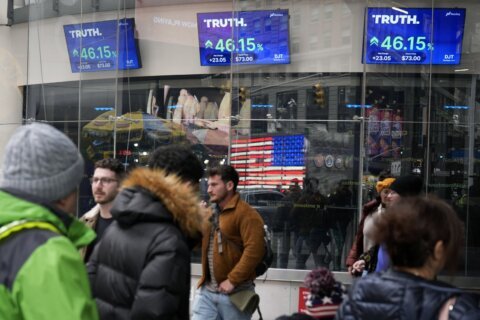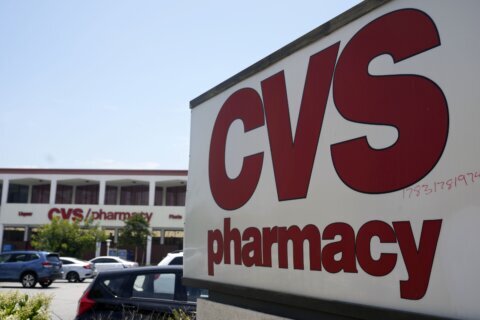The post-pandemic recovery for D.C. restaurants hasn’t happened for many, and owners are facing headwinds on several fronts with rising costs and lower foot traffic. Meanwhile, they’re also facing criticism from customers who are pushing back against service fees restaurants have added to combat those recent challenges.
And, now crime is a concern.
The Restaurant Association of Metropolitan Washington has released results of a recent survey of local restaurant operators and, while some large, destination and special-occasion restaurants are packing sought-after reservations, many mom-and-pop restaurants are struggling, based on survey responses.
“We’re in trouble. We are not out of the hole of the pandemic yet,” said Shawn Townsend, president and CEO of the Restaurant Association of Metropolitan Washington. “Our neighborhood restaurants are caught between a rock and a hard place. Costs have soared, but diners understandably can only pay so much for a meal.”
More than 50 locally-owned restaurants in D.C. have closed this year.
The RAMW survey, conducted between Sept. 28 and Oct. 8, received responses from 287 restaurants, 95% of which are independently owned and operated. The majority of responses came from restaurant operators in the District.
According to survey results, summer sales fell for more than one-third of restaurants compared to last summer, with an average drop in revenue of 31%.
Customer traffic was down for 44% of restaurants responding to the survey from last summer, with an average drop of 28%.
“If you walk past a restaurant at lunchtime, at happy hour or at late-night dinner, the reality is that we are just not seeing that foot traffic pick back up,” Townsend said.
In a separate survey conducted by the National Restaurant Association between Aug. 14 and Sept. 5 of 944 adults in the D.C. area who have dined at a restaurant in the past three months, 52% said they are eating at home more often because of increased prices, and 43% are eating out less often.
Customer traffic is only part of the problem. Nearly all restaurants responding to the survey said they have increased prices, but inflation is outpacing those increases. Food costs average 23% more than in 2019. Layered on top of inflation are other operating costs, including wages and rent.
“Supply chain issues, inflation is the key word of the day, of the month and of the year,” Townsend said. “And there are rent and landlord challenges as well.”
Three in four restaurants responding said they are less profitable than before the pandemic, with profits down an average of 34%.
Restaurants can only raise prices so much, and more are resorting to additional sources of revenue per diner, including controversial tack-on charges, like service fees. Those fees have only further alienated confused diners. While RAMW generally supports a restaurant owner’s right to add such fees, it is lobbying the D.C. Council for regulations to require transparency about what those fees are for and where that money goes.
Clyde’s Restaurant Group, one of the largest locally-owned restaurant operators in the D.C. area, was sued last week by a traveler’s advocacy group over what it alleges are “junk fees” it adds to customer bills.
On top of all of this is what has become the contentious Initiative 82, passed by D.C. voters last year, pitting restaurant operators against labor advocates.
Initiative 82 changes the way tipped workers get paid by phasing out requirements that employers make up the difference in tipped-employee pay, only if they fall short of D.C.’s hourly minimum wage.
Instead, it gradually raises what restaurants pay to tipped workers to be in line with the minimum wage for non-tipped workers by 2027, whether tips make up the difference or not. (A similar initiative was approved by D.C. voters in 2019, but ultimately overturned by the D.C. Council).
The Restaurant Association of Metropolitan Washington, which represents the interests of restaurant operators, acknowledges at Initiative 82 is here to stay, but opposes the four-year timeline in phasing it in, preferring a “rip off the bandage” approach.
“From a restaurateur’s perspective, stretching out the end of the tip credit makes it needlessly complicated, requiring operators to remodel their labor costs each time an increase takes place,” Townsend said. “With each remodeling comes a new need to educate our staff and guests about how it all works, over and over again.”
In its survey, 73% of restaurant operators said speeding up the end of the tip credit will help to settle into a new normal. Half said it would help level the playing field between small independent restaurants and larger restaurant groups that are better able to absorb the increased costs.
For diners, there are takeaways worth mentioning. Yes, you should still tip, generously if so inclined, and yes, you should question all service charges and add-on fees that aren’t clearly explained, either on the menu or the bill.
The D.C. restaurant scene has more long-term headwinds. The 10% sales tax in the District makes dining more expensive than the suburbs. High rents make the city less attractive to out-of-town chefs and operators. And now crime has become a deterrent. Last week, longtime D.C. restaurant operators Aaron McGovern and Arturas Vorobjovas closed their last remaining restaurants, citing in part the rise in violent crime.








